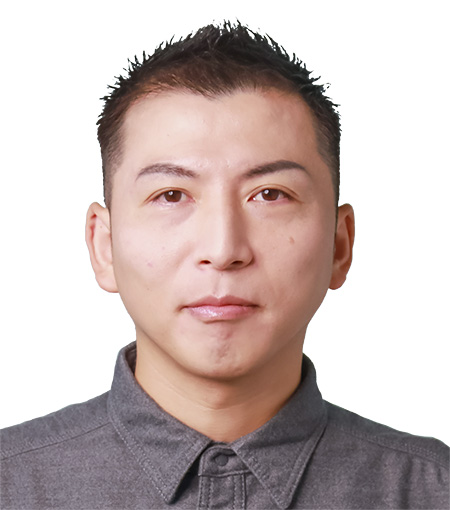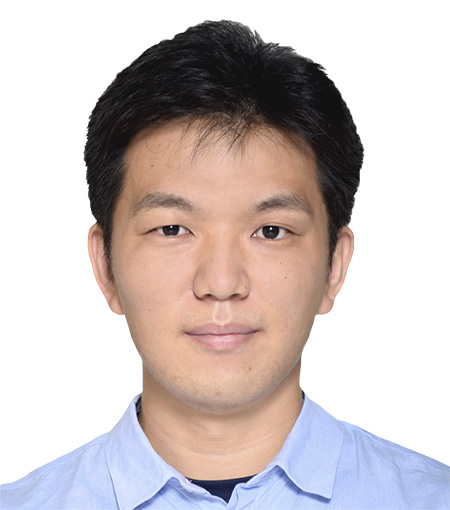- JST Home
- /
- Strategic Basic Research Programs
- /
 PRESTO
PRESTO- /
- project/
- Function and regulation of plant molecules/
- [Plant molecules] Year Started : 2022
[Plant molecules] Year Started : 2022
Yusuke Aihara
Tailor-made regulation of multi-functional “plant modification molecules
Grant No.:JPMJPR22D1
Researcher
Yusuke Aihara

Associate Professor
Graduate School of Science
Kobe University
Outline
Plants produce various kinds of highly reactive molecules, referred to in this study as plant modification molecules (PMMs). This study focusses on one PMM, isothiocyanate (ITC), and explores their multiple target proteins and physiological functions in Brassicales plants. Discovering the mechanism of action of ITCs that determines its target specificity at the molecular level, will ultimately enable development of “tailor-made” ITCs whose physiological effects are specifically optimized. The long-term aim of this study is to develop a molecular engineering tool that could be applied to a wider range of PMMs to enhance plant productivity.
Hiroaki Kato
Creation of artificial receptors using plant stress response mechanisms
Grant No.:JPMJPR22D2
Researcher
Hiroaki Kato

PRESTO Individual Researcher, Japan Science and Technology Agency
Outline
Plants use cell membrane receptors to recognize the presence of pathogens and induce defense responses against infection. In this study, I will focus on sphingoid base receptors and analyze in detail how these receptors capture sphingoid bases. Next, by modifying the mechanism of sphingoid receptor, I will try to create an “artificial receptor” that allows plants to prepare against attack by pathogens when a physical stimulus is given in advance. I hope this study will contribute to the development of new pest control technology.
Makoto Shirakawa
Expression atlas of plant idioblasts by single-cell RNA-sequencing
Grant No.:JPMJPR22D3
Researcher
Makoto Shirakawa

Assistant Research Fellow
Institute of Plant and Microbial Biology
Academia Sinica
Outline
Plant idioblasts are remarkable examples of cell specialization. Idioblasts accumulate a large amount of proteins and secondary metabolites in their organelle, for example, vacuoles. To clarify molecular mechanisms of the biosynthesis and the storage of proteins and secondary metabolites in idioblasts, I perform single-cell RNA-sequencing of idioblasts and identify key factors, which differentiate organelle. I also try to manipulate the functions of idioblasts by chemical biology and CRISPR/Cas9 technologies.
Ryosuke Sugiyama
C/N/S circulatory system underlying catabolic recycling of specialized metabolites
Grant No.:JPMJPR22D4
Researcher
Ryosuke Sugiyama

Assistant Professor
Graduate School of Pharmaceutical Sciences
Chiba University
Outline
Plants make a range of specialized metabolites that protect them from environmental biotic and abiotic stress, such as plant-eating insects. Specialized metabolic pathways have long been considered one-directional routes to synthesize bioactive end products using primary metabolites. This project attempts to address whether and how specialized metabolites are recycled back into primary metabolism, focusing on release and reuse of carbon, nitrogen, and sulfur elements as a nutrient. Advancing our knowledge on recycling pathways will facilitate rational control of the balance between nutrient storage and defensive functions of specialized metabolites as well as engineering of the levels of compounds beneficial for humans in crop plants.
Chika Tateda
Unraveling the switching mechanism between systemic acquired resistance and systemic induced susceptibility
Grant No.:JPMJPR22D5
Researcher
Chika Tateda

PRESTO Individual Researcher, Japan Science and Technology Agency
Outline
Plants are fighting against pathogens not only in infected leaves, but also in non infected leaves where pathogens are physically absent. This is through plant derived, long distance signals, which are important for plant’s systemic defense and survival. In this project, the switching mechanism between systemic acquired resistance and systemic induced susceptibility evoked in non infected leaves during the plant’s battle against pathogens will be elucidated. In the future, we aim to use both systems as a foundation in building crop protection strategies.
Satoshi Naramoto
Polar auxin transport as a model for understanding the mechanisms of body axis formation and maintenance.
Grant No.:JPMJPR22D6
Researcher
Satoshi Naramoto

Associate Professor
Faculty of Science
Hokkaido University
Outline
Polar auxin transport is an important phenomenon that regulates plant morphogenesis, and its transport direction is defined by the polar localization of the auxin efflux carrier PIN protein in the cell. In this study, we will propose a new model for cell polarity and body axis formation by focusing on a novel cluster-like structure of PIN proteins at the plasma membrane. This research may also lead to new technologies for controlling the direction of transport of auxin and other molecules in plants.
Mika Nomoto
Elucidation of the molecular mechanism of mechanosensory trichome
Grant No.:JPMJPR22D7
Researcher
Mika Nomoto

Nagoya University Center for Gene Research Lecturer
Outline
Plant trichomes directly sense external mechanical forces, including raindrops, to activate immune responses dependent on calcium signaling. In this study, I identify and characterize the regulators of mechanical stimuli-induced immunity by multi-omics analyses of isolated trichomes and structural analysis of trichome cells. I elucidate the signaling pathway to create transgenic plants that can strengthen immunity by sensing the increased risk of infection.
Fumi Fukada
Host recognition mechanism by pathogens utilizing plant immune signaling molecules
Grant No.:JPMJPR22D8
Researcher
Fumi Fukada

Assistant Professor
Institute of Plant Science and Resources
Okayama university
Outline
Upon pathogen recognition, plants release molecules called DAMPs to amplify and modulate the immune response against pathogens. In this study, I will demonstrate a novel model for plant-pathogen interactions by elucidating a hypothesis that the DAMPs released from plants are recognized by pathogens and utilized as factors to increase their virulence. This research aims to apply new agrochemical developments by controlling the molecular mechanism of pathogens to trigger their virulence upon DAMPs recognition.
Akira Yoshinari
Elucidation of cell polarization mechanism in plants
Grant No.:JPMJPR22D9
Researcher
Akira Yoshinari

Designated Lecturer
Institute of Transformative Bio-Molecules (WPI-ITbM)
Nagoya University
Outline
In plants, various molecules that regulate morphology and cellular functions are polarly localized in the specific domains of the cells. In this study, I elucidate how the cell polarity is established in the plants by three approaches; polaritomics, chemical genetics, and polarity switch.
Takatoshi Wakabayashi
Comprehensive understanding of apocarotenoid functions contributing to plant growth regulation
Grant No.:JPMJPR22DA
Researcher
Takatoshi Wakabayashi

Associate Professor
Graduate School of Agricultural and Life Science
The University of Tokyo
Outline
Oxidative cleavage of carotenoids yields a variety of essential metabolites called apocarotenoids. Apocarotenoids include strigolactones, which are structurally diverse and play dual function as hormone and rhizosphere signaling. This project aims to comprehensively understand the molecular functions of apocarotenoids by pursuing the function of individual strigolactone molecules, including the elucidation of chemical structures of the as yet unclarified shoot branching inhibiting hormones.













